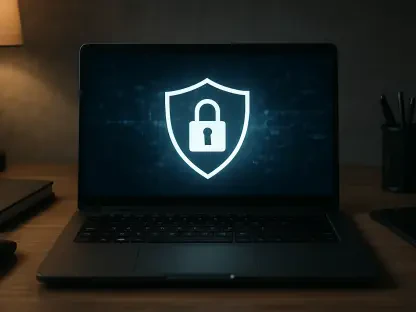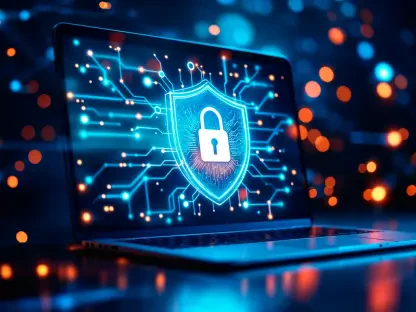In a digital landscape where breaches can cost millions and undetected intrusions linger for over a year, the cybersecurity realm remains a battleground of innovation and espionage. A staggering statistic reveals that over 680,000 F5 BIG-IP systems are publicly exposed, creating a prime target for nation-state actors. This roundup delves into the latest storm of cyber threats, from the alarming F5 breach to novel attack methods reshaping defenses. By gathering insights, tips, and perspectives from industry leaders and security analyses, the purpose here is to provide a comprehensive overview of critical incidents and actionable strategies. Readers will uncover a spectrum of expert opinions on how to navigate this evolving terrain and protect vital infrastructure.
Exploring the Threat Horizon: Key Incidents and Insights
F5 Breach: Nation-State Espionage Under the Microscope
A significant breach of F5 BIG-IP systems, attributed to a suspected China-nexus group known as UNC5221, has sent shockwaves through the cybersecurity community. Industry analyses indicate that attackers maintained access for over a year, exploiting edge infrastructure with sophisticated stealth. This incident underscores a growing trend of prolonged, undetected intrusions targeting critical network components.
Various security firms emphasize the scale of exposure, noting that hundreds of thousands of F5 systems remain vulnerable online, primarily in the U.S. Some experts argue that current detection tools fall short against such persistent threats, advocating for enhanced monitoring of edge devices. Others highlight that collaborative intelligence sharing could be a game-changer in identifying these hidden footholds before they escalate.
Differing views emerge on the adequacy of existing safeguards. While certain analysts push for overhauling security protocols around internet-facing systems, a contrasting perspective suggests that rapid response frameworks and patch prioritization might mitigate risks more effectively. This debate reflects a broader concern about balancing proactive defense with resource constraints in large-scale environments.
EtherHiding and Pixnapping: Cutting-Edge Attack Vectors
North Korea’s EtherHiding tactic, utilizing blockchain smart contracts for malware delivery, has caught the attention of global security teams. Reports from multiple sources describe campaigns like Contagious Interview on LinkedIn, which lure victims with fake job offers. Experts agree that this method’s novelty lies in its ability to evade traditional antivirus scans, posing a significant challenge to static defenses.
Similarly, the Pixnapping side-channel attack on Android devices, affecting brands like Google and Samsung, steals data pixel by pixel. Some industry voices stress that such unconventional techniques highlight a gap in mobile security frameworks, urging dynamic, behavior-based detection. Others caution that user education on app permissions could serve as a first line of defense against these subtle exploits.
Perspectives vary on addressing these innovations. A segment of cybersecurity professionals calls for integrating blockchain forensics into threat hunting, while another group believes that cross-platform patches and rapid vendor responses are more practical. These differing stances illustrate the complexity of adapting to attackers who continuously redefine the battlefield.
Linux Rootkits and ArcGIS Exploits: Stealth Tactics on the Rise
Advanced Linux rootkits, such as LinkPro targeting AWS infrastructure, have emerged as a focal point of concern among security researchers. Combined with Flax Typhoon’s year-long exploitation of ArcGIS servers as backdoors, these threats demonstrate a preference for deep concealment. Many in the field note that infrastructure remains a prime target due to its strategic value across industries.
Opinions diverge on countering such stealthy intrusions. Some specialists advocate for behavioral analysis tools to detect anomalies in system activity, arguing that conventional antivirus solutions are obsolete against rootkits using eBPF modules. Conversely, a different viewpoint emphasizes the need for stricter access controls and regular audits of cloud environments to prevent initial footholds.
Regional and sectoral impacts also spark discussion. Certain analysts suggest that attackers may shift focus toward less-protected industries as defenses in critical sectors tighten, while others predict a continued emphasis on infrastructure due to geopolitical motives. This spectrum of thought underlines the necessity for tailored, adaptive security measures across diverse landscapes.
Phishing and Brand Impersonation: Exploiting Human Trust
Phishing campaigns leveraging trusted names like Microsoft and LastPass have surged, with social engineering tactics at their core. Insights from cybersecurity reports reveal a rise in SEO poisoning for Ivanti malware and smishing scams targeting taxpayers with fake alerts. Most experts concur that these attacks exploit human psychology, making them particularly insidious.
Solutions to curb this trend elicit varied responses. A portion of the security community insists that user awareness training is paramount, as technical barriers alone cannot prevent deception. An opposing view prioritizes advanced email filtering and multi-factor authentication as more immediate deterrents, suggesting that technology can outpace human error if implemented robustly.
Looking ahead, some professionals believe that evolving AI-driven detection could predict and block phishing attempts before they reach users. Others remain skeptical, arguing that attackers will adapt just as quickly, keeping social engineering a persistent threat. This ongoing dialogue highlights the dual need for education and innovation in tackling trust-based exploits.
Defensive Strategies: Collective Wisdom for Robust Protection
Drawing from a wide array of industry perspectives, several key lessons stand out from recent cyber incidents. The F5 breach reveals the critical importance of inventorying internet-facing systems, a point echoed by many who stress visibility as a cornerstone of defense. Continuous monitoring also garners widespread support as a means to catch persistent threats early.
Practical tips abound, with numerous sources recommending rapid patch management to close vulnerability windows swiftly. Tools like ScoutSuite for identifying cloud misconfigurations are frequently cited as essential for preventing accidental exposures in AWS, Azure, and Google Cloud environments. Additionally, training staff to recognize phishing and social engineering attempts is seen as a non-negotiable step across the board.
While consensus exists on the role of nation-state actors in driving espionage, opinions on resource allocation differ. Some advocate for heavy investment in threat intelligence platforms to track sophisticated adversaries, whereas others suggest that fortifying basic cybersecurity hygiene offers a higher return for most organizations. These insights collectively paint a picture of multi-layered defense as the path forward.
Reflecting on the Roundup: Lessons Learned and Next Steps
This exploration of cybersecurity challenges, from the F5 breach to innovative attack methods, brought together diverse expert views that illuminated both the scale of threats and the spectrum of solutions. Discussions around stealthy rootkits and phishing tactics revealed a shared understanding that no single approach could address every risk. The varied opinions on detection tools versus user training underscored a critical balance between technology and human factors.
Moving forward, organizations are encouraged to prioritize actionable measures like system inventories and staff education, as these steps emerged as foundational across expert analyses. Exploring further resources on cloud security tools and threat intelligence sharing is advised to deepen preparedness. Beyond immediate actions, fostering a culture of constant adaptation stands out as a vital consideration, ensuring resilience against an ever-shifting threat landscape.









